"A guitar software instrument can sound incredible – as nuanced and human as the real thing, but only if you know exactly what you are doing with it": The ultimate guide to plugin guitars
After spending decades trying to emulate the guitar, it might have been easier just to pick one up and learn how to play it…

PLUGIN WEEK 2025: For the better part of five decades we have been wrestling with technology to try and get it to imitate the sound of the guitar – and all for one very good reason: it’s a damned hard instrument to master!
Early synthesizers were often played to try and imitate real instruments – way before people realised that they could be used to provided their own excellent sounds. The sound of brass was a particular early sonic synth target, as was the more successful string emulation, but the pluck of a guitar didn’t really work on early analogue synths (although you could arguably do a decent bass guitar sound on one).
It wasn’t until FM-based machines such as the Yamaha DX7 in the ’80s where emulating real instruments got, well, real (ish). But even then it was confined to electric pianos and bells, and despite plenty of dire 'heavy rock guitar' presets on countless workstation keyboards really it was early sampling technology that opened the door to actually recreating the guitar sound… by effectively just recording it.
However, it simply not that easy.
Sample a guitar note or chord and play it up or down a few keys and it quickly loses its authenticity. Guitar samples in the late ’80s and early ’90s were more stabs and effects than guitars. Think The Power by Snap! and you’ll get our drift.
Let’s get physical

It took the all-new physical modelling synths of the ’90s for machines to really rock a 'real' guitar sound.
1994’s Yamaha VL1 was the first great physical modelling hardware synthesiser… and pretty much the last, to be honest (although as we now know, the whole concept of physical modelling has now been reborn in software). But back then, this synth was a beast, and a very expensive one at that. Its all-new physical modelling synthesis utilised modifiers that acted on virtual models of strings and things to create very realistic (or even totally new) sounds.
Want all the hottest music and gear news, reviews, deals, features and more, direct to your inbox? Sign up here.
For five decades we’ve been wrestling with technology to imitate the sound of the guitar
In truth, the VL1 specialised more in wind and brass instruments than it did guitars. And it cost the better part of four grand back then – at least £10,000 today.
It’s fair to say, then, that in the ’90s, our wallets were almost as bereft of cash as our fingertips were of skin as we still attempted to learn the guitar.
More modelling, but not the guitar
The first breakthroughs in modelling technology that brought at least some authenticity to the guitar world weren’t to do with the sound of the instrument itself, but rather the amps that you put it through.
Line6’s POD is largely credited as the first great guitar amp modeller, a 1998 red, curiously kidney-shaped device that modelled amps, effects, and speaker cabinets. Around the same time Roland was championing its COSM (Composite Object Sound Modeling) technology, releasing products such as the VG-8 and GP-100, both of which included amp and cab modelling.

Modelling like this became big business and, as the century closed, if you were a guitar player, these were exciting times. Now you could have just about any amp and cabinet you could wish for at your fingertips, all for a fraction of the cost of the original hardware.
But that’s if you were 'a player’. The rest of us were still twiddling our – now healed – thumbs, awaiting technology that could bring us the sound of a proper guitar.
Thankfully, we were nearly there.
Process that
And a new century meant a new technology – software!
OK, the first softsynths had already appeared, but the first software effect to make waves was IK Multimedia’s AmpliTube, again a suite of amps for guitarists rather than a guitar simulator, but this software allowed anyone with a computer to access a complete chain of pedals, preamps, EQs, power amps, speaker cabinets, and microphone options.
It was truly revolutionary and a couple decades on, Amplitube is still one of the best suite of guitar processing emulations you can lay your hands on. And of course, while IK might have been among the first to recreate guitar gear of all shapes and sizes, they are by no means alone now, and as we see below, the software amp simulation business is huge.
So, if it was a case of ‘what came first, the guitar or the guitar amp?’, in the case of emulations, it’s definitely the latter. Hardware and software amp simulation was the big buzz in music technology at the start of the 21st century, but with the exception of hardware ROMplers, there was still very little to help those of us ‘can’t play, won’t play’ non-guitarists get a decent guitar sound.
But once the amp simulators opened the door for modelling technology, and sampling opened the door for, well… sampling, it was only a matter of time before the two came together for the start of true guitar emulations and the software we know and love today.
So what makes today’s software guitars so much more usable than the samples of yesteryear? Read on…
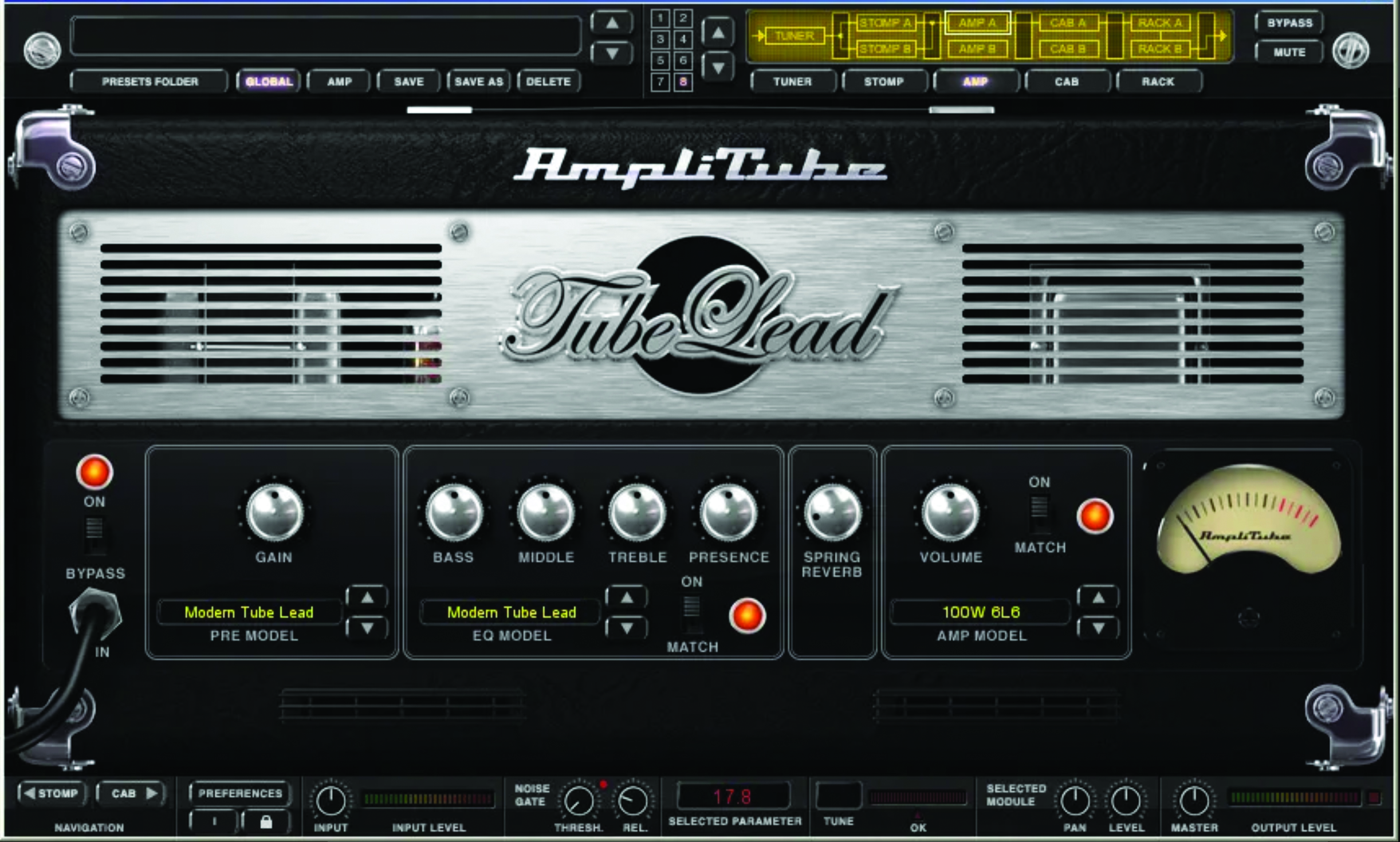
Moving beyond the guitar sample with incredible guitar software
It's safe to say that proper guitar instruments started to appear in the 2000s. Processor power started rocketing so physical modelling became possible in the box, and hard drives suddenly started expanding so much that sample content became GBs rather than MB.
Now, rather than sample and stretch a single note, we had access to multiple versions at multiple velocities. And all the fret noise, pedal noise and any other real-world bonus you could record were thrown in for good measure.
Suddenly, the art of sampling a piano or guitar meant recording literally everything you could, with a variety of microphones and at a variety of positions. Indeed, some of those early instruments were so well captured that they are still being sold and used today.
But it isn’t just about the physical size of what has been recorded that makes modern day software instruments so good; it is also about how you play those notes in terms of replicating how a human actually interacts with the instrument.

Articulations are key
The trick is in articulations – that is, the way we play and the movement we introduce when playing a physical object. How it's plucked or strummed, the pressure exerted, how strings are bent and stretched…
The latest guitar plugins come complete with many articulations, as they add complete realism and dynamics to the guitar samples with variations of each sampled note.
The human element is key when it comes to how well today’s sample libraries and software instruments work
Think of these articulations as basically just different ways of playing notes or transitioning between them. When you just pluck a guitar string with no movement in the real world, it has no articulation, and it soon gets pretty boring if you just play notes that way. Playing the note harder or softer is probably the easiest form of articulation to understand, accenting or emphasising the note more the harder you play. Playing short notes by pressing the string after playing adds staccato, another very simple form of articulation.
If you vibrate the string up and down quickly as it’s played, that adds vibrato which is a more complex way of changing how a single note can vary in articulation. Even playing the same note on different frets on the guitar can be seen as an articulation as it might be brighter the further up the fretboard than down at the end.
Grace notes are articulations where a note is played prior to the main note, so you could play one note on another fret and then slide – move your finger up the string and fret while pressing – into the target note on the same string. You can also achieve a similar effect by bending the string – moving it up into the target note.
Hammer-on is a similar two-note articulation where you play the first note and hammer a second finger onto the target note on the same string at a different fret while the first is playing.
All of these things and more are included in today’s guitar instruments, elevating them way beyond sampling a guitar stab in 1990
The note is not being picked or slid into but ‘hammered’ with the second finger. A pull-off is the opposite, where you remove the second finger after both have been pressing the same string at different frets. Then there’s the thump or thunk – the slap sound that many guitarists use at the end of a bar or section, muting the strings, hitting the guitar board, and generally adding a rhythmic element to the music.
All of these things and more are included in today’s guitar plugins, elevating them way beyond sampling a guitar stab in 1990, or using a hardware ROMpler module or synth in 1998.
A 2025 guitar instrument can sound incredible; as nuanced and human as the real thing, but only if you know exactly what you are doing with it.

Your soft options
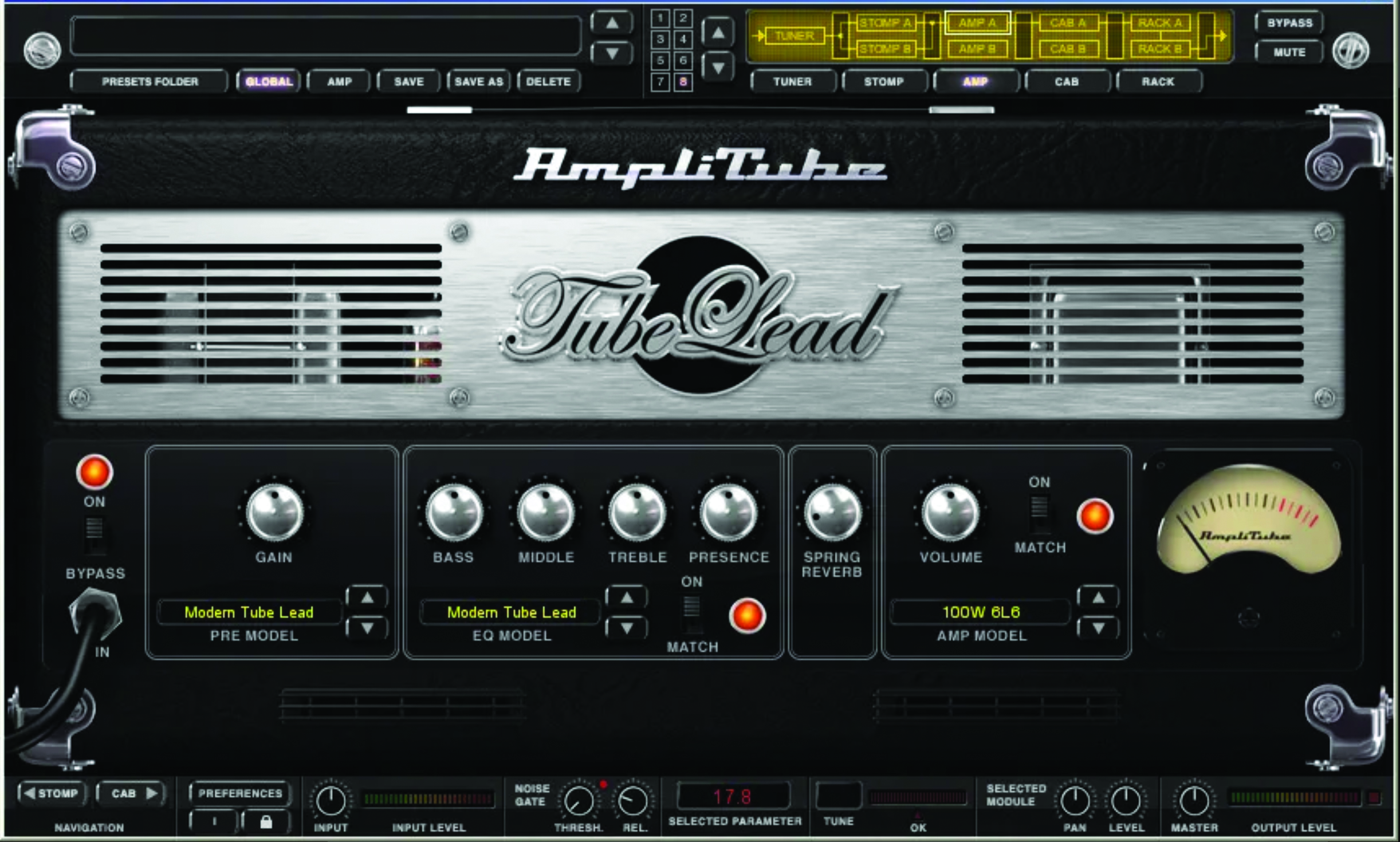
While we name our top acoustic and electric guitar instruments and effects later, you don’t have to spend a fortune as there are plenty of freebies out there.
Mercuriall Metal Area MT-A is a great-looking distortion pedal. Impact Soundworks Shreddage 3 Stratus Free is a great rock guitar simulator. And Ample Sound Ample Guitar M Lite II is a fantastic free acoustic guitar.
That’s both your guitar instruments and a pedal sorted.

On the other hand heavyweights such as Native Instruments Guitar Rig 7 Player features an incredible array of guitar gear, with two amps and matching cabinets plus 26 effects and tools.
IK Multimedia’s AmpliTube Custom Shop is effectively a platform the company wants you to expand on by buying more devices, but you get an incredible 42 free to start with so just keep that wallet in your pocket.
Articulating more realism

Meanwhile, many Kontakt instruments (the increasingly popular format for building sampled instruments including many guitar plugins) share a similar articulation setup and the fun all starts with the pitch and mod wheels so keyboard players and programmers can record articulations as you would on a keyboard.

The Mod wheel is set to adjust the vibrato pitch movement over three speeds (slow, medium and fast), while the pitch bend does just that with your guitar notes, imitating the bend effect of moving your finger up a string. Our example instrument, NI’s Electric Sunburst, allows you to choose which notes to bend while doing this.

The other guitar articulations are determined by the yellow keys on the virtual keyboard. Switch note C1 allows you to play open guitar notes, the standard playback. Obviously, playing them harder and softer will introduce that most basic of velocity articulations.

On C#1 we have Muted, which gives you that staccato like feel from playing shorter notes. Don’t forget that you can switch these articulations mid recording with your left hand while your right hits the notes, so you can play sections of muted and open notes just like a guitarist.

Key D1 introduces Flageolet which adds a harmonic edge to the sound by imitating one hand gently pressing down on a different fret at the note plays, adding a quite ethereal sound to the guitar tone. Tremolo is the last, on Dsharp, adding a rhythmic or pumping volume effect (as opposed to vibrato’s rapid pitch change).

Finally, just a quick note on the other coloured keys here. The green key is another articulation, the hammer-on in this case. The red notes allow you to play different patterns (in this case called Triple Energy), and the blue notes are where you'll do your playing.
Programming acoustic embellishments
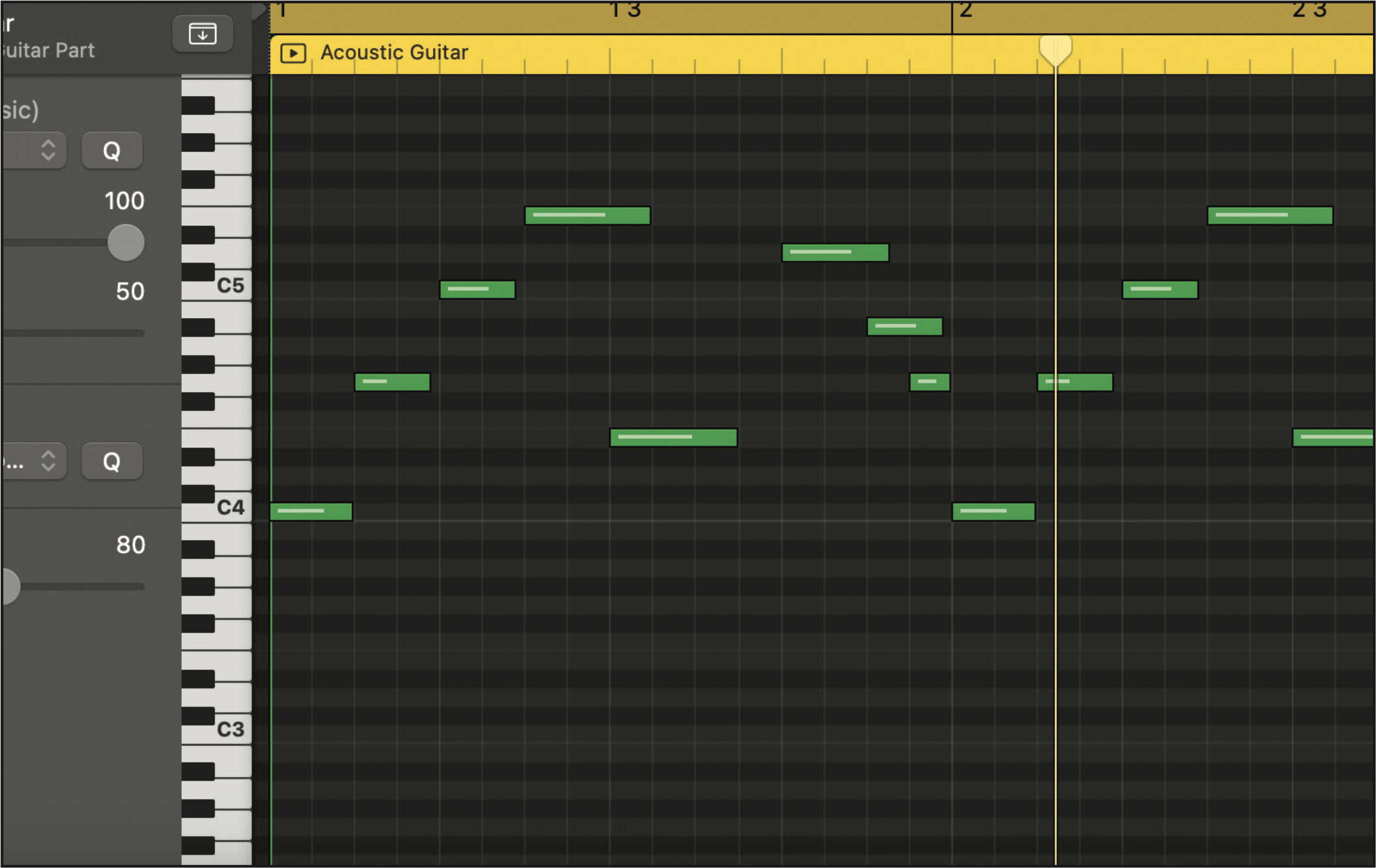
Acoustic and electric guitar parts can be really livened up using articulations and other embellishments, which can take them from rather static computer-generated pieces into more Sheeran-like territory.
Here, we’ve programmed another simple guitar riff with single notes as shown in more of an arpeggio style.

The first thing to do is extend the bass notes of the arpeggios. Guitarists can effectively play two notes at once by not muting the first, so we’ll keep the lower tones going here for a more natural effect.

Now it’s time to program in some of the articulations that we have discussed, and one of the most common is the ‘thunk’ sound of a guitarist muting the strings towards the end of a bar, to introduce the following section. In this instrument – session Strings Acoustic Plucked – the notes are as shown (B#).

These add a lovely stop-start feel to our loop, and it already sounds more human. You can also choose other effects on other keys like bend up and down, using F# and G, in this case.

A lot of instruments now come with patterns built in, and we find that just using short notes on the pattern keys (in this case, notes E and F#) introduces short and very realistic playing which helps underpin our main melody. It’s cheating, but not as much as using the entire pattern!

Finally, you can use the yellow key switches to change the pick style at any time, but remember that once pressed it stays in that mode, so you have to program in changes each time. Here, we’ve gone a bit mad, switching between tremolo and Flageolet, forgetting what we advised earlier about always aiming for a human feel!
Basic guitar programming for a more human feel

Basic guitar chords can translate easily to the keyboard, and if you choose one of your DAW’s stock guitar sounds – we’ve used Logic’s Acoustic Guitar, but most DAWs ship with something appropriate – you can already get a decent guitar sound. But it will be by no means perfect. Here’s show to jazz it up a bit!

Unless you deliberately mute a guitar string after plucking it, it will naturally carry on vibrating and making a sound. So first make sure that you let each string vibrate until it fades out, so maximise each note length, (unless of course you pluck the string or deliberately use a staccato playing style).

All of our notes in our chord start at the same time, but a more natural guitar strum will have each string plucked slightly after the previous as the hand strums from top to bottom, so introduce some manual delay between each note being played.

As you program your guitar notes, make sure that the note velocities are not identical – again, as human beings we will play each one at a different strength. Start by manually increasing or decreasing every other note, but as your pattern gets more complex, consider randomising velocities within a certain range of values.

As you play different chords on a guitar, you might come across a transition between chords where the same string is used in each chord. In this case, make sure you stop the note from the first chord before the second one starts to make it sound natural.

And taking this ‘human’ element further, don’t program patterns that are impossible to play on a guitar – seven-finger chords and ridiculously complex melodies should be avoided!
Mixing electric guitars

We’re going to show you how to simulate a triple-tracked guitar sound and how to mix several big guitar sounds so that they all occupy a decent space in your mix. First up, that triple-tracking. Create a simple electric guitar melody.
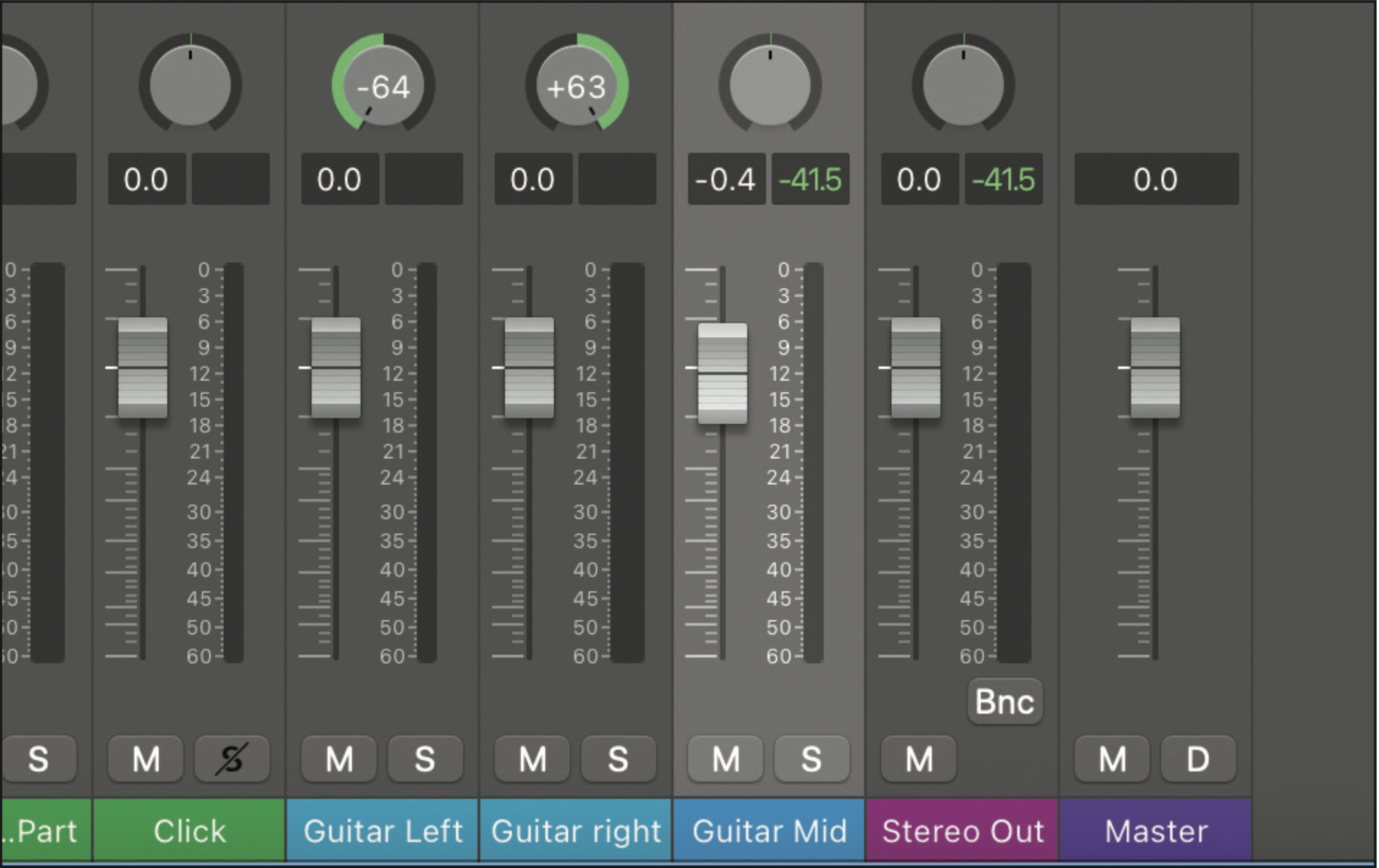
Triple-tracking is panning left, right and mid with the same track, so create three auxiliary channels, panning as such. Set them as mono channels (not shown, but above).

Now add two different chorus effects to each of the left and right channels to create a sense of width. You also want to add a different guitar amp to each; he're we're using the plugin Amplifikation CM and using two different presets like Mid and Lead.

To enhance the pseudo tripple-tracking effect, you can add a delay to each of the left and right channels, setting one with a 1/8 delay and one with a 1/4. Use the setting as shown and you should get a fantastically wide chorus/ping pong delay effect with all three of your guitar tracks layered together.
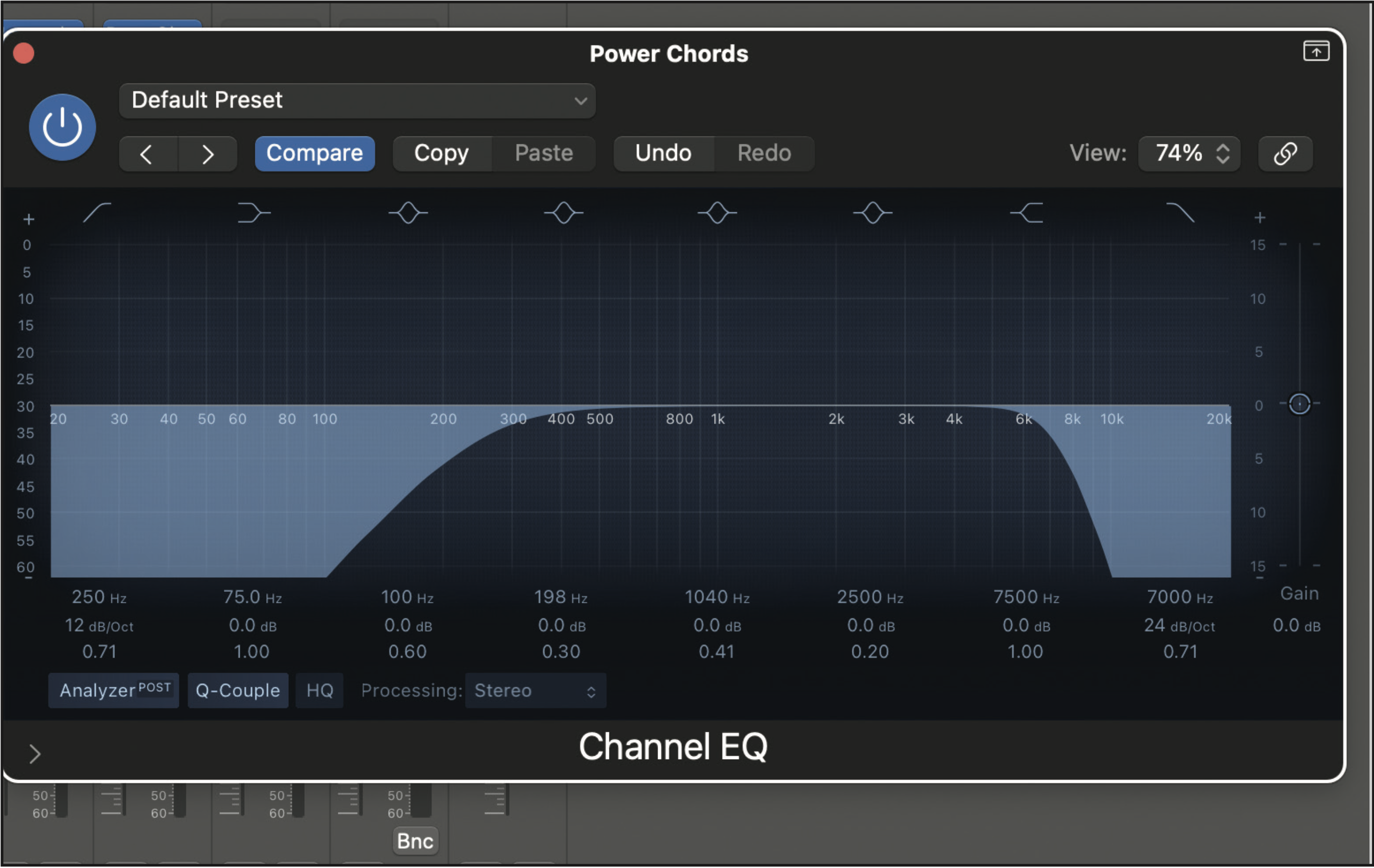
For mixing different guitar instruments, it’s a matter of EQ-ing each to make sure they don’t clash. Powerchords, for example, can sit centrally in the frequency spectrum, with a band pad EQ set around 250Hz and 7kHz.
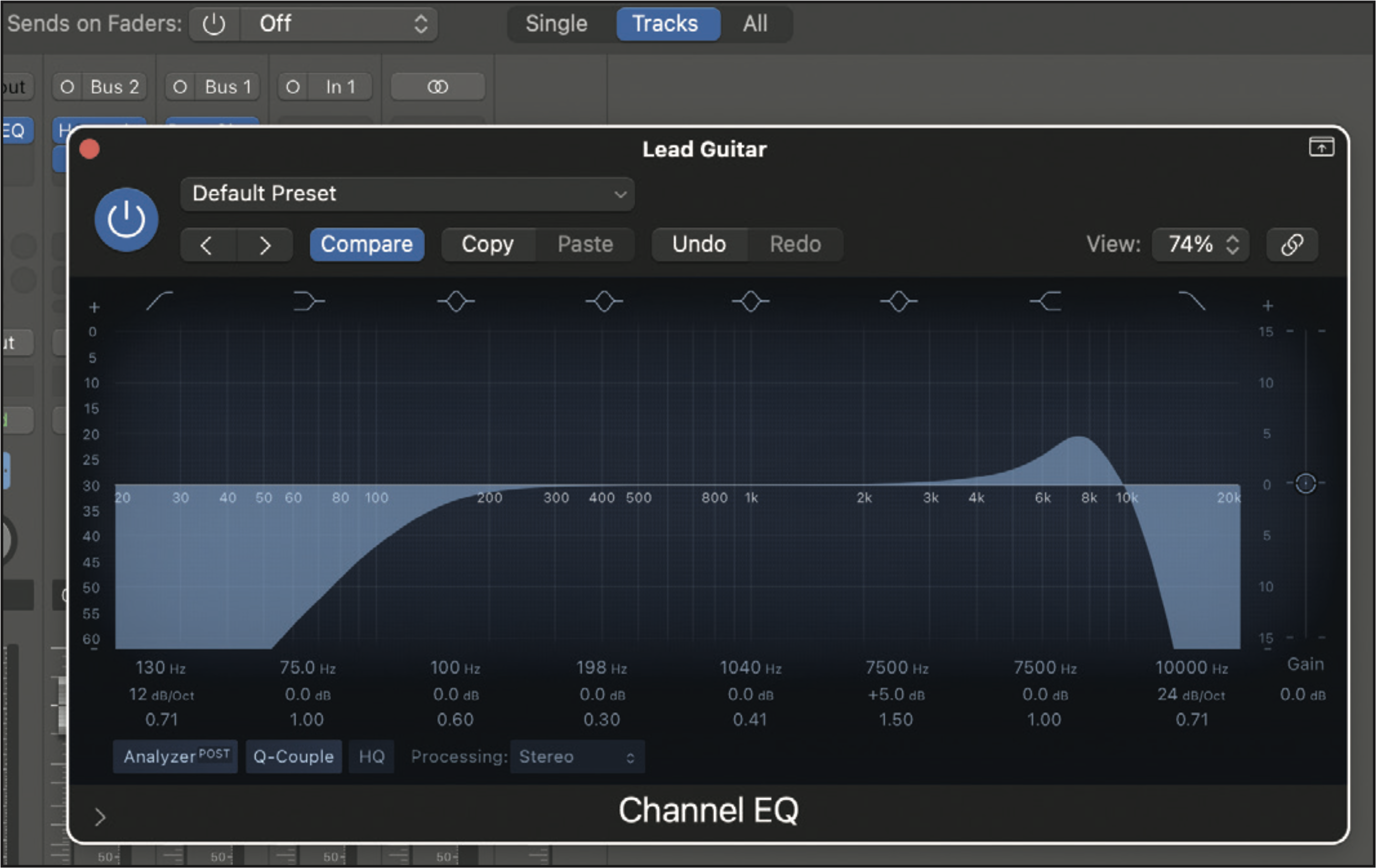
Lead guitars, meanwhile, can be cut lower at 130Hz and boosted at around 10kHz, just before roll-off, so they stand out against the powerchords and still have some bite. Panning will obviously also help here, but keep frequencies separate like this will help multiple big guitar instruments all find a place in a mix.

I'm Andy, the Music-Making Ed here at MusicRadar. My work explores both the inner-workings of how music is made, and frequently digs into the history and development of popular music.
Previously the editor of Computer Music, my career has included editing MusicTech magazine and website and writing about music-making and listening for titles such as NME, Classic Pop, Audio Media International, Guitar.com and Uncut.
When I'm not writing about music, I'm making it. I release tracks under the name ALP.
You must confirm your public display name before commenting
Please logout and then login again, you will then be prompted to enter your display name.